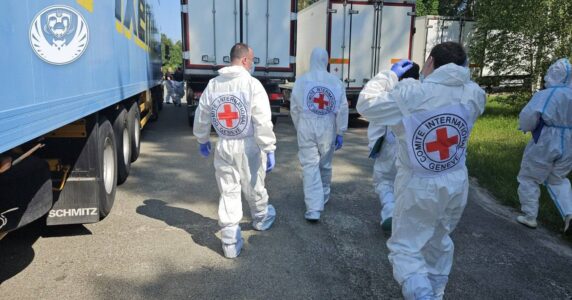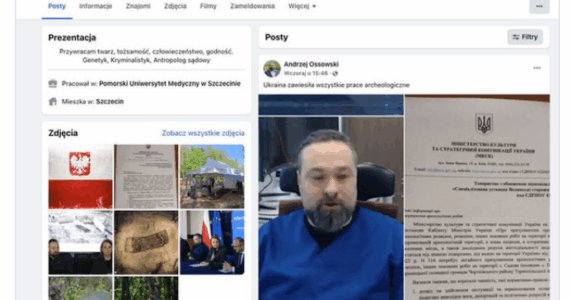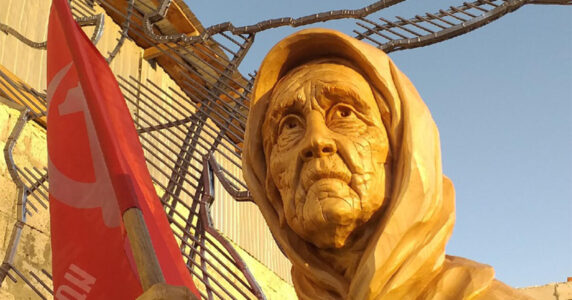Navigation and useful materials
Does Lukashenko act on his own or at the Kremlin’s behest?
The European Union’s 6,000-kilometer land border between Ukraine, Belarus, Moldova, Russia, and its eastern member states (Estonia, Finland, Hungary, Latvia, Lithuania, Norway, Poland, Slovakia, Bulgaria and Romania) has not been a gateway for illegal migration until recently. According to Fortex (European Border and Coast Guard Agency), the scale of illegal migration across the eastern border was much smaller than on any other migration route to the EU, accounting for less than a percent of the total.
In 2015, when the influx of refugees to European countries reached unprecedented proportions since the Second World War, 1,927 cases of illegal crossings were recorded on the eastern border. For reference: in the same year, 764,333 people illegally entered the EU via the Western Balkans, and 885,386 via the Eastern Mediterranean. Even the temporary Arctic route for illegal migration, which existed between October and December 2015, was used by about 6,000 asylum seekers, mainly from Afghanistan and Syria—three times as many as those who crossed the Eastern border throughout the entire year.
This year, the situation on the EU’s eastern border has dramatically changed. In comparison with 2020, the number of illegal crossings has grown by an incredible 1407%. But it is not the total number of migrants that was impressive, since that remained quite low anyway (for instance, German police has registered 6,600 migrants who illegally arrived from the territory of Belarus, primarily in October). What is the most striking is the way in which those figures have been achieved: this channel of illegal migration has been artificially created by the regime of Belarus’ self-proclaimed president.
Migrants are brought into the country in an organized manner, promising easy further transfer to the EU, they are then taken to the Western border in large groups and forced to rush the border at gunpoint, giving them no chance to come back. Earlier on the Belarusian-Lithuanian, and now on the Belarusian-Polish border, the events resemble front-line reports: provocations, breakthroughs, skirmishes, gunshots. In this way, Lukashenko is taking revenge on neighbouring EU countries for supporting the Belarusian opposition.
Gaddafi, the late dictator of Libya, did the same back in 2011. In retaliation for Italy’s support of his opponents, Gaddafi created an “inferno” on Lampedusa, a small Italian volcanic island in the Mediterranean, sending thousands of desperate African migrants on boats there. Hundreds of them died trying to cross the sea border.
“Putting desperate people on a boat and pushing them off to sea — sending them to die in the Mediterranean — is something very close to being another crime against humanity,” said then-Italian Foreign Minister Franco Frattini.
At least 10 migrants have already died of cold and hunger in the forests on Belarus’ western borders. Propagandists of the Lukashenko regime expect more casualties and blame the Polish side in advance.
Anton Shekhovtsov, the Ukrainian expert on the Kremlin’s ties with far-right and extremist movements, considers this “an act of state-sponsored terrorism.”
Does Lukashenko act on his own or at the Kremlin’s behest?
Polish Prime Minister Mateusz Morawiecki accuses Putin of organizing a migration crisis on the country’s border with Belarus.
“Lukashenko is the executor of the latest assault, but this assault has a sponsor who is to be found in Moscow, and this sponsor is President Putin,” said Morawiecki at an emergency debate in the Polish parliament.
Belarus would never have behaved so aggressively on the Polish border without Moscow’s consent, a clear signal of approval from Putin. It acts as Russia’s agent, believes expert on Russian military policy Jakob Hedenskog from the Swedish Defence Research Agency.
Chatham House also writes about Belarus as “another tool in Russia’s hybrid war against Western liberal democracies.”
Indeed, Moscow not only does not prevent Minsk from creating an explosive conflict on the formally common border (of the Union State), but also repeats its neighbour’s rhetoric, blaming the West for the crisis. However, the approval of this scheme, which fits into the Kremlin’s policy of shaking up and weakening Europe, does not mean that Lukashenko is not acting on his own. He has long been hostile to Poland and almost twenty years ago, he already intimidated it by saying that “we have about 150,000 illegal migrants, from India, Pakistan, Afghanistan and other countries, who are all ready to cross this border.”
“I am confident that Europeans will not just come to Belarus, they will crawl and ask us for help in cooperation, at least in the fight against drug trafficking and illegal migrants, because this is now their biggest pain point. Therefore, they can’t help but need our cooperation and support. One more thing. If they don’t pay, we will not protect Europe from this influx at our own expense… They should at least ask us to fight against this, and pay us,” said Lukashenko in a 2002 interview.
In the same interview, almost twenty years ago, he criticized Putin for “great love for the European Union” and for “Russia’s accession to NATO on an extra stool.” So, the Kremlin does not need to train him and ensure he is anti-West: this is an integral part of his world-view. He guessed that Europe could be blackmailed through a crisis at the border on his own.
By the way, the Lukashenko regime has been taking money from the EU for decades to restructure Belarus’ border control agencies and develop infrastructure. Between 2001 and 2012 alone, the European Union’s support for Belarus in the field of integrated border management amounted to approximately EUR 47.5 million.
Putin’s willing provocateur
However, Lukashenko’s anti-Western views and proneness to blackmail do not mean that Moscow is not interested in this crisis and is not fuelling it, encouraging Lukashenko with its support. Moscow may believe that it is killing two birds with one stone: striking at Europe and cutting off Lukashenko’s retreat, leaving him no room for political manoeuvre.
He does not leave much room for himself, either, claiming that Western countries seem to be deliberately moving their troops closer to the borders of the Union State under the guise of resolving the migration crisis and threatening that “we have something to move closer to the borders as well, and Russia even more so.” Of course, Russia is happy to support such rhetoric.
The Atlantic Council think tank aptly calls Lukashenko Putin’s willing provocateur. He acts at his own will, but for the benefit of Moscow. The publication compares Lukashenko with Kadyrov, calling the latter “Putin’s voluntary executioner” who eliminates Putin’s critics, allowing him to “leave no fingerprints.”
According to General Roman Polko, the former commander of the GROM special forces unit, Lukashenko is really trying to use a “human bomb” against Poland, naively believing that Europe will yield to the blackmail, lift all sanctions and possibly even provide some financial assistance to stop the flow of migrants. But at the same time, Putin is “pulling the strings.”
“Putin is constantly waging a hybrid war. He knows that he is too weak to win an open armed conflict with NATO. In addition, Russia is too dependent on Western economies to afford such a conflict,” said the general.
In fact, according to the Atlantic Council, the crisis fabricated by the Belarusian dictator mimics the tactics previously used in Russia. It refers to the 2015 migration crisis, which peaked after Russia joined the war in Syria.
In 2015, Syrian armed rebels made significant progress in fighting the forces of Bashar al-Assad’s regime and threatened to undo the government forces’ hold over Damascus.
President Assad turned to the Kremlin for help, and on September 30, the Russian Federation Council authorized President Putin to wage war on Syrian territory. Since September 2015, Russian aircraft have attacked anti-government forces (between 7,000 and 15,000 sorties, according to various estimates, with over 12,000 targets destroyed). This dramatically changed the course of the military conflict. President Assad, whose defeat was almost a certainty at that point, remained in power.
This was accompanied by a wave of migration, with hundreds of thousands of Syrians fleeing westward in an attempt to escape the war. The autumn and winter of 2015 brought to Europe a wave of migration far greater than the wave caused by the war in the former Yugoslavia. One million refugees arrived in Germany alone.
The wave of refugees created a number of unresolved issues. This strengthened the positions of right-wing populist leaders, parties and movements, created divisions among European countries, pushed the UK to exit the EU and provided fertile ground for the Russian propaganda with its apocalyptic images of Europe’s demise. It argued that Europe could survive only in alliance with Russia.
The same message is being promoted by Belarusian propaganda, which is no longer different from Russian propaganda: “Europe can be strong only if it has good relations with Belarus and Russia.”
They appeal to “real” Europe, which includes Germany and France, calling them countries that “have at least some sovereignty.” A proof of sovereignty in this case is apparently concluding treaties that Russia needs. They speak contemptuously about Poland, Lithuania, Ukraine. These allegedly provoke conflicts which “real” Europe does not need, but they will be quickly destroyed.
“A military solution to this conflict will lead to the end of Polish statehood, Lithuanian statehood, and the fragmentation of the European Union. We are not even talking about Ukraine, this state does not exist as such,” claims the TV channel STV.
Thus, the script of this political play is very similar to the one from 2015: create a crisis, blame it on the victims, and then proffer oneself as a solution. But this time, the truth is too obvious: if in 2015, Russia was not caught red-handed, the artificial nature of this current crisis is right there. Therefore, propaganda that tries to use the same trick looks like what it is: hypocrisy and cynicism. And the actions themselves are inhumane.
In addition, when they say that the crowd of migrants using all identical tools is “self-organized,” or that this is “a step of despair,” or “just try shooting women and children,” Ukraine knows very well what it means: a hybrid war.
If you have found a spelling error, please, notify us by selecting that text and pressing Ctrl+Enter.


